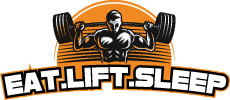Want to take your strength training to the next level? Then it’s time to intensify your workout with chest and back same day training.
By combining these two muscle groups, you’ll not only save time but also see incredible gains in strength and muscle mass.
Forget about those boring split workouts where you only focus on one muscle group at a time.
With chest and back same day training, you’ll be hitting multiple muscles in a single session, giving you a full-body workout that will leave you feeling pumped and energized.
Plus, the science behind this training method shows that working opposing muscle groups together leads to greater gains than working them separately.
So why settle for mediocre results when you can achieve greatness?
The Benefits of Combining Chest and Back Exercises
By working out your chest and back together, you can achieve a more balanced and efficient workout routine. Chest and back exercises complement each other, as they are both major muscle groups that work in opposition to one another.
When doing chest exercises, the muscles push forward while the back muscles pull backward. Thus, combining these two workouts on the same day results in a more effective training session.
Doing chest and back same day split has numerous benefits for bodybuilding enthusiasts. First, it saves time since you only need to hit the gym once rather than twice to target both muscle groups separately.
Secondly, it allows for better recovery time since you’re not overworking any particular muscle group too much on separate days. Lastly, incorporating both chest and back exercises into one workout session helps improve posture by strengthening your upper body muscles.
A great example of a chest-back same day routine would be starting with compound lifts such as bench presses or pull-ups before moving onto isolation exercises like dumbbell flys or cable rows respectively.
This method ensures that you are targeting all areas of your chest and back effectively while also allowing for maximum efficiency during your workout session without compromising intensity or quality of exercise movements.
Maximizing Your Time and Gains
Looking to get the most out of your workout? Maximizing your time and gains is key, especially when it comes to strength training.
Combining chest and back exercises on the same day can help you achieve better results in less time. This approach is known as a chest and back same day split, and it’s a popular routine among bodybuilders.
One of the biggest benefits of doing chest and back exercises on the same day is that it allows you to work multiple muscle groups at once. This means that you can target your entire upper body in one session, rather than splitting it up over several days.
By hitting both these major muscle groups during one workout, you’ll be able to stimulate more muscle fibers and maximize your gains. To create an effective chest back same day routine, start by selecting compound exercises that target both muscle groups simultaneously.
Some great options include pull-ups, dumbbell rows, bench presses, push-ups, and pull-downs. When performing these exercises, focus on maintaining proper form and using heavy weights with low reps to really challenge yourself.
Remember to give your muscles ample rest between sets so that they have time to recover before continuing with the next exercise. Incorporating a chest back same day routine into your strength training program can help you achieve better results in less time.
By working multiple muscle groups at once, maximizing your effort during each set, and giving your muscles enough rest between sets, you’ll be able to build a stronger upper body faster than ever before!
The Science Behind Chest and Back Same Day Training
Get ready to dive into the science behind the powerhouse workout that combines two muscle groups in one, igniting a fire in your upper body like never before.
The chest and back same day split has long been a debated topic among fitness enthusiasts. Some argue that it’s bad to do chest and back on the same day as both muscle groups are essential for pushing and pulling movements respectively.
However, research shows that training chest and back together can result in significant gains in strength, power, and hypertrophy. The key lies in understanding the anatomy of these muscles.
Chest muscles are primarily activated during pushing exercises such as bench press while back muscles come into play during pulling exercises such as rows or pull-ups. This means that by combining these two muscle groups, you’re hitting all angles of your upper body effectively.
To maximize results from a chest back same day routine, it’s important to vary your exercise selection and intensity levels to prevent overtraining or injury. A well-planned chest-back workout should include compound movements like bench press or barbell rows along with isolation exercises like cable flyes or reverse flyes for complete stimulation of each muscle group.
Consistency is also key; incorporating this type of workout into your gym routine regularly can lead to significant improvements in upper body strength and physique over time without sacrificing other areas of your fitness regimen.
The Importance of Muscular Balance
It’s crucial for you to focus on achieving muscular balance in your upper body during your workouts, especially when doing a chest and back same day split. Neglecting certain muscle groups can lead to imbalances that could potentially cause injury down the road.
To avoid this, here are three reasons why focusing on muscular balance is essential:
- It helps prevent injuries: Muscular imbalances can result in poor posture and misalignments that increase your risk of getting injured while performing exercises. By targeting all muscle groups evenly, you reduce the likelihood of overusing certain muscles and underusing others.
- It improves performance: When you work on improving muscular balance, it allows for more efficient movement patterns during exercise routines. This will help you lift heavier weights with better form and have greater stability overall.
- It enhances aesthetics: Achieving muscular balance means having a well-rounded physique that looks aesthetically pleasing to the eye. You’ll look great from every angle after putting in hard work towards developing both your chest and back muscles.
Intensifying strength training with a chest and back same-day workout requires an emphasis on achieving optimal muscular balance throughout your upper body.
Not only does it reduce the risk of potential injury but also improves performance outcomes while enhancing aesthetic appeal overall.
Therefore, make sure to incorporate exercises that target both chest and back muscles equally into your routine so that each area gets equal attention during training sessions!
Tips for Getting Started
Starting a new workout routine can be challenging, but with these helpful tips, you’ll be on your way to achieving optimal muscular balance in your upper body.
If you’re interested in doing chest and back same day workouts or a chest and back same day split, there are some important things to keep in mind.
First of all, it’s important to warm up properly before beginning any strength training exercises. This will help prevent injury and prepare your muscles for the upcoming workout.
Another important tip is to focus on form over weight. When doing chest and back same day bodybuilding exercises, it’s easy to get caught up in trying to lift heavier weights than you’re ready for.
However, using improper form can lead to injury and may not target the intended muscle groups effectively. Make sure you start with lighter weights until you’ve mastered the proper technique for each exercise.
Finally, it’s important to listen to your body and take rest days when needed. Overtraining can lead to fatigue, decreased performance, and even injury.
Try incorporating a chest back same day routine into your weekly workout schedule but make sure you give yourself time to recover between workouts as well.
With these tips in mind, you’ll be well on your way towards achieving a balanced upper body while intensifying your strength training with chest and back same day workouts!
Choosing the Right Exercises
Picking the right exercises is crucial to achieving balanced upper body muscles during a chest and back same day routine. When it comes to strength training, compound movements are king.
These exercises recruit multiple muscle groups at once, allowing for greater overall strength gains. Examples of effective compound movements include bench press, pull-ups, rows, and dips.
In addition to compound movements, isolation exercises can also be incorporated into your chest and back same day split. These exercises target specific muscles within the larger muscle groups being worked.
For example, bicep curls can be added in after completing your back workouts to provide additional work for your arms.
Push-ups with varying hand positions can target different areas of the chest as well. It’s important to choose exercises that challenge you without sacrificing proper form.
If you’re new to strength training or have any injuries or limitations, consider working with a personal trainer or physical therapist who can help create a customized chest back same day routine that works for you.
Remember that consistency is key when it comes to seeing results from your strength training efforts!
Incorporating Compound Movements
By incorporating compound movements into your chest and back routine, you can efficiently target multiple muscle groups at once and achieve greater overall strength gains. Compound exercises work several muscle groups simultaneously, allowing you to make the most of your time in the gym.
Here are four compound movements that can be incorporated into your chest and back same day bodybuilding routine:
- Barbell Rows: This exercise primarily targets the back muscles but also works the biceps, shoulders, and forearms. By using a barbell instead of dumbbells or cables, you can lift heavier weights and challenge yourself more.
- Bench Press: The bench press is a staple exercise for chest training but also works the triceps, shoulders, and even some back muscles if done properly. Incorporating this movement into your chest and back same day workout can help save time while still achieving significant results.
- Pull-Ups: Pull-ups are an excellent compound movement that targets the lats (back muscles), biceps, shoulders, and even core muscles depending on how they are performed. Adding pull-ups to your routine will increase overall upper body strength.
- Push-Ups: Push-ups work not only the chest but also triceps, shoulders, and core muscles making it a great compound movement to incorporate in a chest-back workout routine.
Doing chest and back same day isn’t necessarily bad as long as you’re doing it correctly with proper form and rest periods between sets. Incorporating compound movements into your routine is essential to maximize efficiency while minimizing risk of injury or overtraining.
In conclusion, by incorporating these four compound movements into your chest-back same day workout routines, you’ll be able to effectively target multiple muscle groups simultaneously resulting in greater overall strength gains.
Remember to always prioritize correct form over weight lifted, listen to your body’s needs when taking rest days, stay hydrated throughout workouts, and eat a balanced diet to support your body’s muscle growth.
Focusing on Form and Technique
To make the most out of your compound movements and minimize the risk of injury, it’s crucial to focus on proper form and technique during your chest and back workout routine. These exercises require a lot of coordination between different muscle groups, so it’s essential to have good posture, alignment, and control throughout each movement.
One way to ensure proper form is to start with lighter weights and perfect your technique before gradually increasing the load. This approach will help you establish good habits early on in your training program and avoid any bad habits that could lead to injuries or setbacks down the road.
Another helpful tip is to incorporate a variety of exercises that target different areas of your chest and back muscles. For example, you can use dumbbells for chest flys or cable machines for pull-downs. Below is a table that outlines some popular compound movements for chest and back workouts:
| Chest Exercises | Back Exercises |
|---|---|
| Bench Press | Bent-Over Rows |
| Incline Bench Press | Pull-Ups |
| Dumbbell Flys | Lat Pulldowns |
| Push-Ups | Cable Rows |
| Chest Dips | Deadlifts |
By focusing on proper form and incorporating a variety of exercises into your routine, you’ll be able to intensify your strength training while minimizing the risk of injury.
Remember to always listen to your body if something doesn’t feel right during an exercise – it’s better to take a break than push yourself too hard and cause harm in the long run.
With dedication and consistency, you’ll be well on your way towards achieving strong chest and back muscles!
Balancing Volume and Intensity
Finding a balance between how much you do and how hard you push yourself is key to achieving a successful chest and back workout routine. While it’s important to challenge yourself, it’s also crucial not to overdo it.
Balancing volume and intensity is necessary for building strength, avoiding injury, and seeing progress. When designing your workout routine, focus on the number of sets and reps that will allow you to challenge yourself without putting too much strain on your body.
Keep in mind that doing too many sets or reps can lead to fatigue, which can compromise your form and increase the risk of injury.
Start with a moderate number of sets (around three) per exercise and gradually increase as you get stronger. In addition to balancing volume and intensity through set and rep counts, consider incorporating different exercises into your routine. Variety helps prevent boredom while ensuring all muscle groups are worked thoroughly.
For example, if you’re focusing on chest one day, include exercises such as push-ups or dumbbell flyes in addition to bench presses.
Similarly, when working on back muscles like lat pulldowns or rows complement chin-ups or pull-ups for an effective workout experience that balances both volume and intensity levels perfectly!
Avoiding Overtraining
If you want to avoid burnout and injury, it’s important to know how to recognize the signs of overtraining in your chest and back workout routine.
One common sign is experiencing extreme fatigue that lasts for several days after your workout. Another indication is a lack of progress despite consistent training, which means your body needs more rest to recover properly.
Taking longer than usual to complete your workouts or losing strength are also warning signs that you might be overdoing it.
To avoid overtraining, make sure you’re not working out too frequently or for too long. This can put unnecessary strain on your body and lead to injuries.
Instead, focus on quality rather than quantity by incorporating exercises that target multiple muscle groups at once such as push-ups, pull-ups, rows, and deadlifts. These compound movements will help maximize results without increasing the risk of injury.
Remember also that recovery is just as important as training itself when it comes to avoiding overtraining in a chest and back workout routine.
Make sure you’re getting enough sleep each night, eating a balanced diet with plenty of protein and healthy fats, staying hydrated throughout the day, and taking regular rest days where you do no physical activity at all.
By doing these things consistently while still pushing yourself during your workouts, you’ll see improvements in both strength and overall health without experiencing burnout or injuries.
The Role of Rest and Recovery
You may be surprised to learn just how important rest and recovery are in keeping your body healthy and avoiding burnout or injury. Many people believe that the more they work out, the better their results will be. However, this is not always the case.
In fact, overtraining can lead to a decrease in strength and muscle mass. Rest and recovery play a crucial role in building muscle and increasing strength. When you engage in intense exercise, you create small tears in your muscles. These tears need time to heal, which is where rest comes into play.
If you don’t allow for enough rest between workouts, your muscles won’t have time to repair themselves properly. In addition to allowing for proper muscle repair, rest and recovery also help prevent injuries from occurring. If you push yourself too hard without taking breaks, you increase your risk of developing overuse injuries such as tendinitis or stress fractures.
By incorporating adequate rest days into your workout routine, you give your body time to recover so that it’s ready for the next session of intense exercise.
Tracking Your Progress
Tracking your progress is an important part of any fitness journey, and did you know that people who track their workouts are more likely to stick to their exercise routine?
Keeping a record of your chest and back strength training will allow you to monitor the intensity of your workouts, identify areas for improvement, and celebrate your accomplishments.
One way to track progress is by recording the weight, sets, and reps for each exercise. This information can be entered into a journal or digital app. Over time, you can review these records and see how much weight you’ve lifted or how many reps you’ve completed.
You may also notice patterns in which exercises need improvement or which ones have become too easy. Another useful tracking method is taking photos of yourself at regular intervals. This allows you to visually compare changes in muscle definition, size, and overall appearance.
It’s important to note that these changes may not happen overnight but rather over weeks or months. Don’t get discouraged if results aren’t immediate; consistent effort will pay off in the long run.
Incorporating tracking into your chest and back strength training routine will help motivate you on your fitness journey by celebrating milestones while identifying areas for growth. Remember that progress takes time but with dedication and effort reaching your goals becomes achievable!
Common Mistakes to Avoid
To optimize your workout routine, it’s important to be aware of common mistakes that can hinder progress and lead to injury.
One of the biggest mistakes people make when doing chest and back workouts on the same day is neglecting their form.
Poor form not only diminishes the effectiveness of your workout but also increases the risk of injury.
Make sure you understand how to perform each exercise correctly before adding weight or increasing reps.
Another mistake many people make is trying to lift too heavy too soon. It’s easy to get caught up in the desire for quick results, but pushing yourself too hard too fast can lead to muscle strain or even tears.
Start with a weight that challenges you but allows you to maintain proper form throughout each set. Gradually increase weight as you become stronger and more comfortable with each exercise.
Lastly, don’t forget about rest and recovery! It’s crucial to give your muscles time to recover between workouts so they can rebuild and grow stronger.
Not taking enough rest days or overdoing it during workouts can actually hinder progress rather than accelerate it. Listen to your body – if you feel excessively sore or fatigued, take an extra day off before hitting the gym again.
By avoiding these common mistakes, you’ll be able to intensify your strength training without compromising safety or results.
Addressing Imbalances and Weaknesses
Now that you know what mistakes to avoid when intensifying your strength training with chest and back on the same day, it’s time to address any imbalances or weaknesses that may hinder your progress.
These are often caused by neglecting certain muscle groups or overtraining others. By focusing on these areas, you can improve your overall performance and achieve better results.
One common imbalance is between the chest and upper back muscles. Many people tend to focus more on their chest, resulting in a weaker upper back. This can lead to poor posture and shoulder pain.
To address this issue, include exercises like rows, pull-ups, and lat pulldowns in your routine. These will strengthen your upper back muscles and improve your posture.
Another weakness to watch out for is in the lower back muscles. Neglecting these muscles can lead to lower back pain and injuries.
To strengthen them, incorporate exercises like deadlifts and hyperextensions into your routine. These will not only target the lower back but also engage other muscle groups like glutes and hamstrings for a full-body workout.
Remember to start with lighter weights and focus on proper form before increasing intensity.
Sample Workouts for Chest and Back Same Day
Ready to take your workouts to the next level? Check out these sample routines for combining chest and back exercises on the same day! By working these two major muscle groups together, you can achieve a more balanced physique while maximizing your time at the gym.
Here’s one example of a chest and back workout routine: start with compound movements such as pull-ups and bench presses, which engage multiple muscle groups simultaneously.
Follow up with isolation exercises like dumbbell flyes or cable crossovers for your chest, and rows or lat pulldowns for your back. You can also mix in some supersets or drop sets to really push yourself.
Another option is to focus on supersets, which involve doing two exercises back-to-back with no rest in between. This method not only saves time but also increases intensity by allowing you to stimulate both muscle groups at once.
Try pairing a chest exercise (such as push-ups) with a back exercise (such as bent-over rows), or alternating between upper and lower body moves (like pull-ups followed by lunges).
Incorporating these sample workouts into your routine can help you intensify your strength training by targeting both chest and back muscles on the same day. Be sure to listen to your body, adjust weights accordingly, and allow enough time for recovery between workouts.
With dedication and consistency, you’ll soon see progress towards building a stronger, more balanced physique!
Intermediate and Advanced Training Strategies
As you progress in your fitness journey, it’s time to step up your game and explore advanced training strategies that allow you to unleash the full potential of your body.
One strategy to intensify your chest and back same day workout is by incorporating supersets. This means performing two exercises with little to no rest in between.
For example, you can combine bench press with pull-ups or dumbbell flyes with barbell rows. This will not only challenge your muscles but also improve endurance and burn more calories.
Another way to amp up your chest and back same day routine is by using more complex movements such as compound exercises.
These are multi-joint movements that work several muscle groups at once, providing a more efficient workout.
Examples of compound exercises for chest include push-ups, dips, and incline bench press while for back include pull-ups, chin-ups, and lat pulldowns.
Adding these moves to your routine will help target different areas of the chest and back while also improving overall strength.
Lastly, if you’re an experienced lifter looking for a new challenge, try incorporating drop sets into your chest and back same day workout. This involves performing an exercise until failure then immediately reducing the weight by 20-30% without rest and continuing until failure again. This technique helps increase muscle exhaustion leading to greater muscle gains over time.
Remember to always listen to your body when trying new techniques – push yourself but don’t overdo it!
By exploring intermediate and advanced training strategies like supersets, compound exercises, and drop sets you can take your chest and back same day workouts to the next level! Keep challenging yourself with these techniques while also ensuring proper form, nutrition, recovery times, and sleep patterns for optimal results.
Modifications for Injury Prevention and Rehabilitation
To prevent injuries and promote rehabilitation, you can modify your workout routine by incorporating exercises that focus on stability, mobility, and flexibility. If you have a previous injury or are recovering from one, it’s essential to work with a trainer or physical therapist to determine which exercises are safe for you. A modified strength training plan can help decrease the risk of further injury while building strength.
Incorporate exercises like bird dogs and plank variations into your chest and back workout routine to improve core stability and spinal alignment. These movements will also help develop balance and coordination, making it easier to perform other compound lifts with proper form.
Additionally, stretching before and after exercise will enhance mobility in joints such as the shoulders, hips, and thoracic spine.
Finally, don’t forget to include active recovery techniques like foam rolling or light cardio on off days. This helps increase circulation to muscles while reducing soreness and stiffness.
Proper rest is also crucial when preventing injuries or rehabilitating an existing one- don’t overtrain! Listen to your body’s signals and adjust accordingly. With these modifications in place, you’ll be able to intensify your strength training without putting yourself at risk for further harm.
The Benefits of Variety and Periodization
Switching up your workouts and incorporating different exercises can add some spice to your routine, prevent boredom, and challenge different muscle groups.
When it comes to chest and back exercises, there are numerous variations you can try out that will help intensify your strength training. For instance, instead of sticking with the usual bench press or push-up routine for your chest muscles, you can incorporate dumbbell flyes or cable crossovers.
Similarly, for back muscle exercises, you don’t have to rely solely on pull-ups or rows. Incorporating lat pulldowns or T-bar rows will help work different areas of the back muscles. This variety in chest and back workouts not only adds a new dimension to your workout but also helps target specific muscles that may be neglected by traditional exercises.
Periodizing your workouts is crucial as well. Periodization involves manipulating variables such as intensity, volume, and frequency over a set period of time to maximize muscle growth while minimizing injury risk.
By implementing a progressive overload approach (gradually increasing weight lifted) during each phase of periodization, you’ll see significant gains in both strength and muscular hypertrophy without risking injury from overtraining one particular group too frequently.
Nutrition and Supplementation for Muscle Growth and Recovery
If you want to maximize your muscle growth and recovery, it’s important to focus on nutrition and supplementation. Research shows that proper protein intake can increase muscle mass by up to 25%.
Make sure you are consuming enough protein through sources such as lean meats, eggs, dairy products, beans, and nuts. Aim for at least 1 gram of protein per pound of body weight daily.
Additionally, consider incorporating supplements such as whey protein powder or branched-chain amino acids (BCAAs) to help support muscle growth and recovery. In addition to protein intake, carbohydrates are also crucial for fueling your workouts and aiding in recovery.
Complex carbs such as brown rice, whole grain breads and cereals, sweet potatoes, and quinoa provide sustained energy during workouts. Post-workout meals should include a combination of complex carbs and proteins to replenish lost glycogen stores and promote muscle repair.
Don’t forget about healthy fats too- avocadoes, nuts/seeds, olive oil can all aid in hormone production which is essential for building muscle. Finally, remember that hydration is key for optimal performance. Aim for at least half your body weight in ounces each day (150lb person = 75oz water), more if you’re sweating a lot during exercise.
Staying hydrated helps regulate body temperature during exercise while also supporting nutrient transport throughout the body. With proper nutrition and hydration practices paired with consistent strength training, you will lead towards gains in strength & size over time!
Putting It All Together: Your Ultimate Chest and Back Same Day Training Plan
Ready to take your upper body workouts to the next level? Here’s a training plan that’ll challenge your muscles and leave you feeling accomplished.
Incorporating chest and back exercises on the same day is an effective way to intensify your strength training routine. Not only does it allow you to work both muscle groups in one session, but it also allows for adequate rest between workouts.
To start, warm up with some light cardio and dynamic stretching before moving on to the main workout.
Begin with compound movements such as bench press or push-ups for your chest, followed by rows or pull-ups for your back. These exercises target multiple muscle groups at once and are great for building overall strength.
Next, focus on isolation exercises such as flyes or cable crossovers for your chest, and lat pulldowns or face pulls for your back. These exercises target specific muscle fibers and help build definition in those areas.
Finish off with some core work such as planks or Russian twists to strengthen the muscles that support proper posture during these exercises.
Incorporating these exercises into your routine two to three times a week can lead to significant gains in upper body strength and size. Remember to increase weight gradually over time and listen to your body’s signals of fatigue or discomfort.
With consistency and dedication, this chest and back same day training plan can help you reach new levels of fitness success.
Conclusion
Congratulations! You now have all the tools you need to intensify your strength training with chest and back same day.
By combining these two muscle groups, you can maximize your time in the gym while also reaping numerous benefits for your physique and overall health.
Remember to focus on muscular balance, use proper form, modify exercises as needed, and incorporate variety and periodization into your routine.
Additionally, fueling your body with proper nutrition and supplements can aid in muscle growth and recovery. With dedication and consistency, you’ll see impressive gains in no time.
So what are you waiting for? Get ready to crush your next workout with this ultimate chest and back same day training plan!




